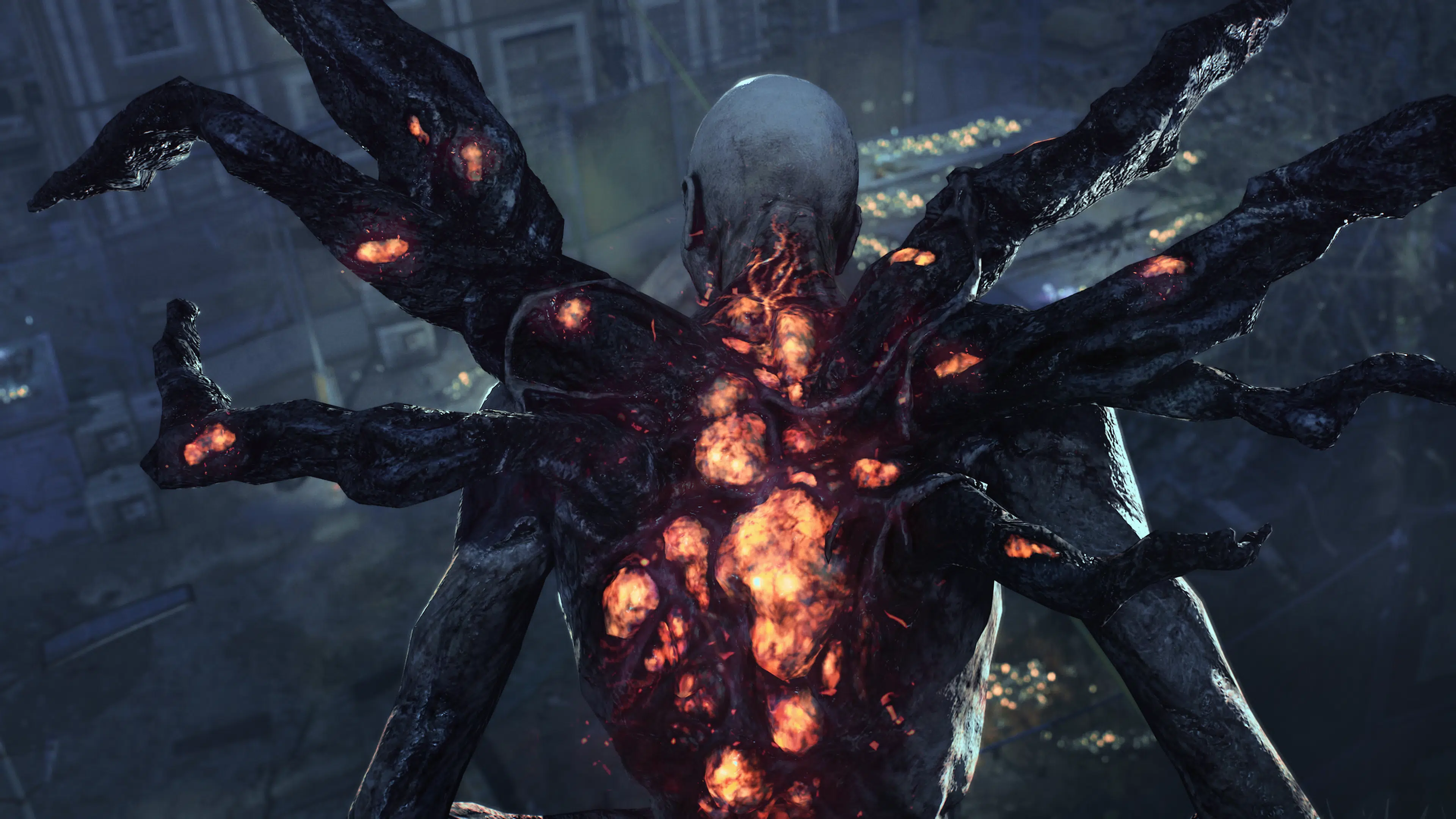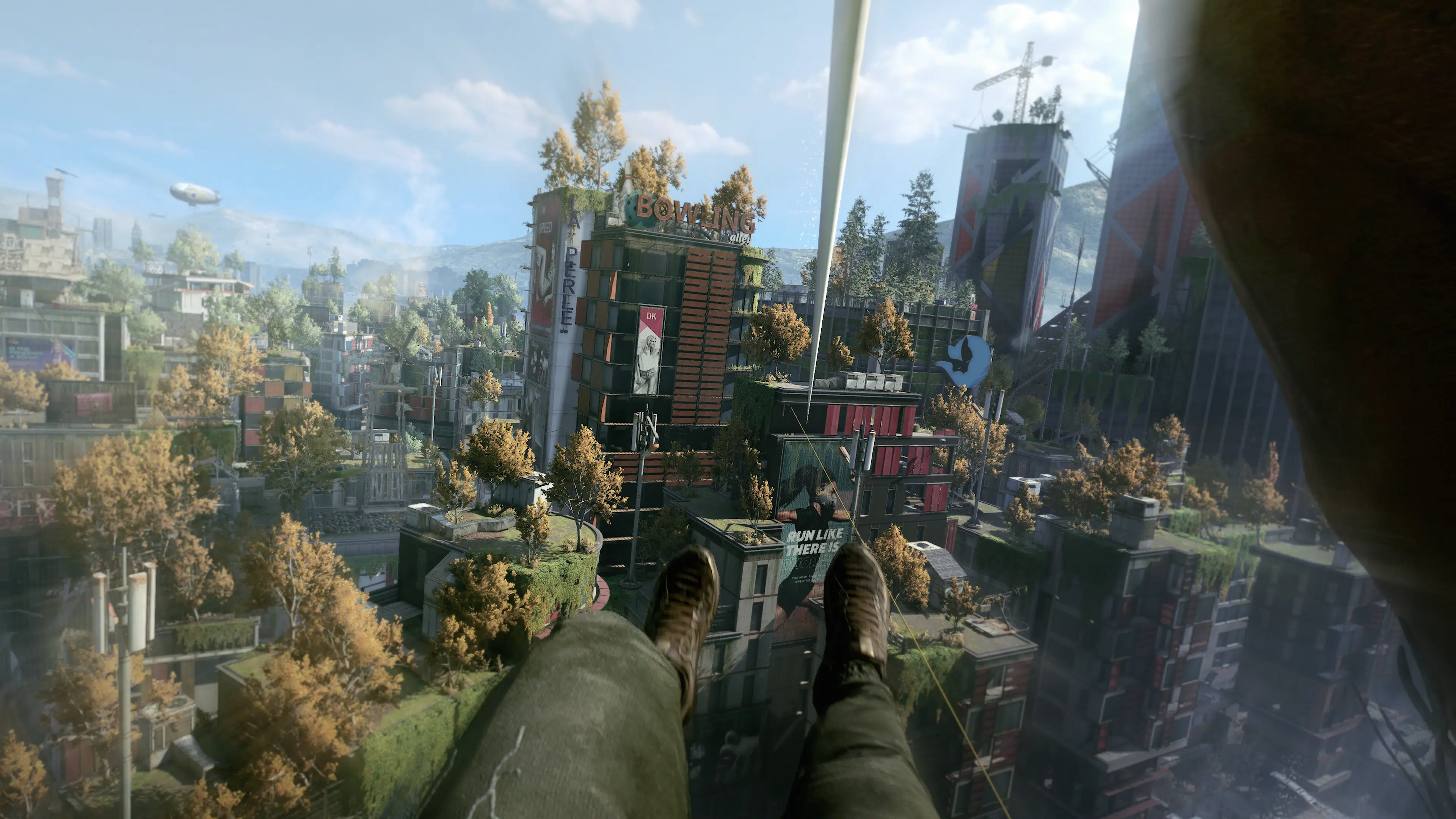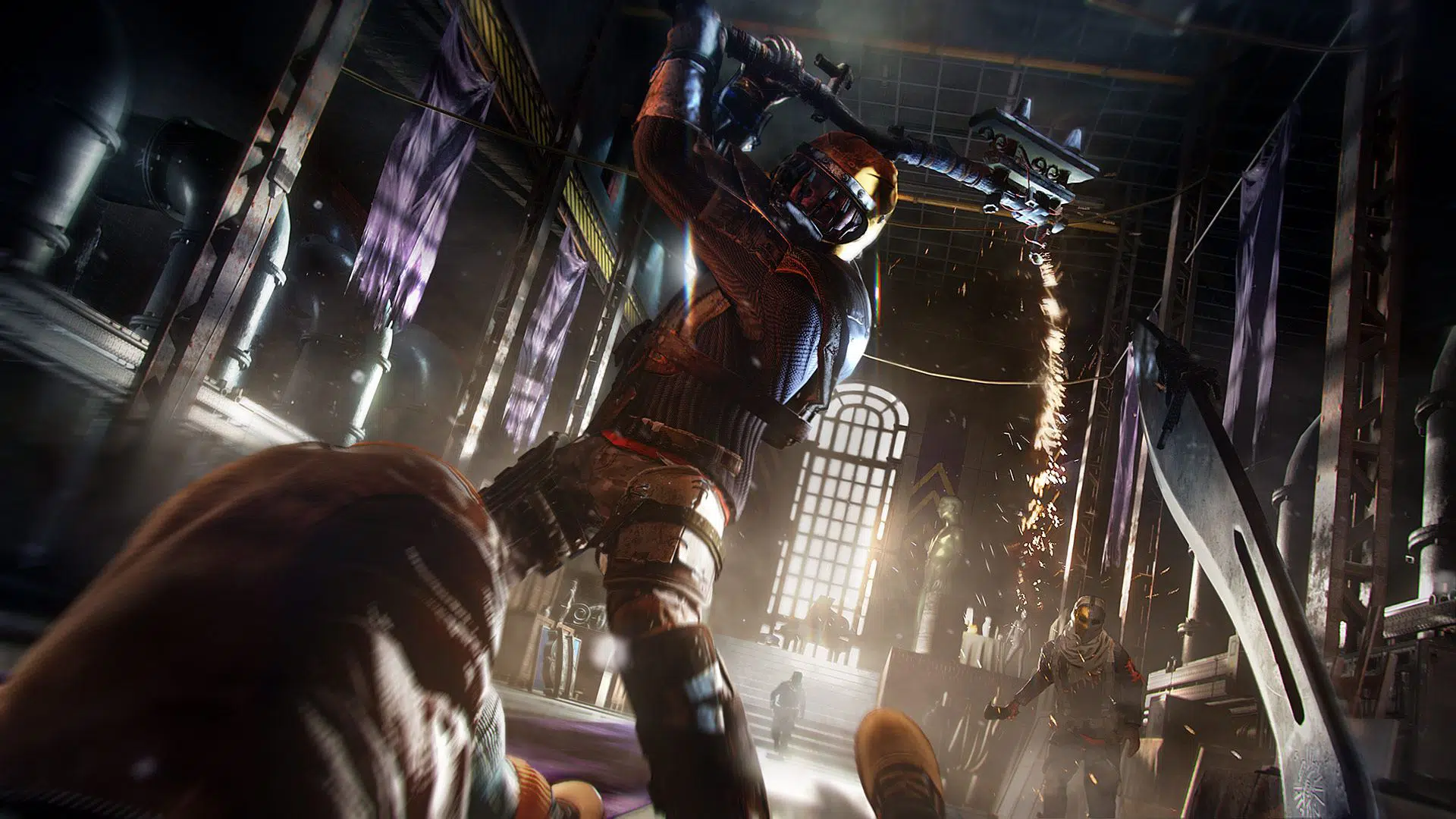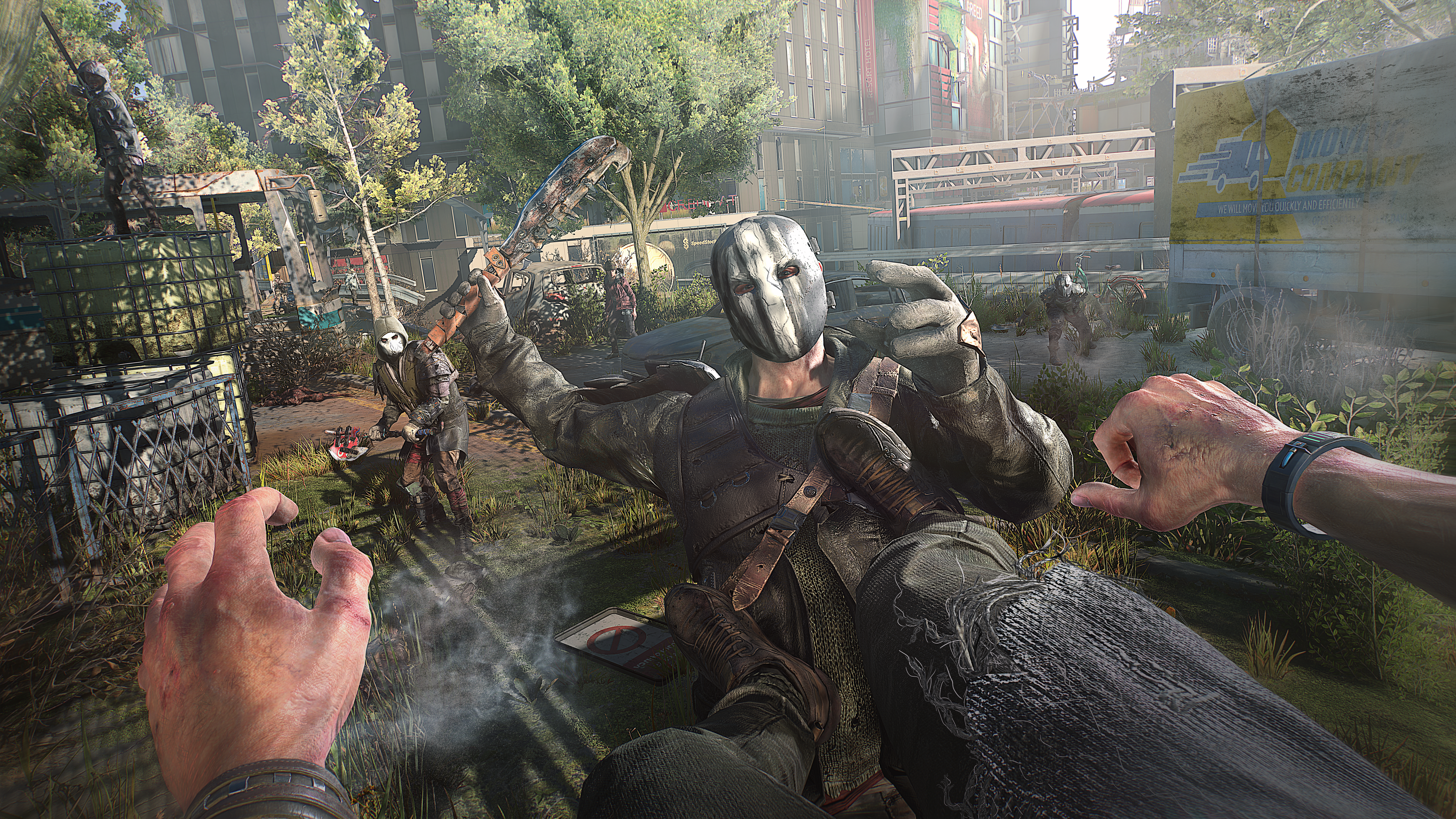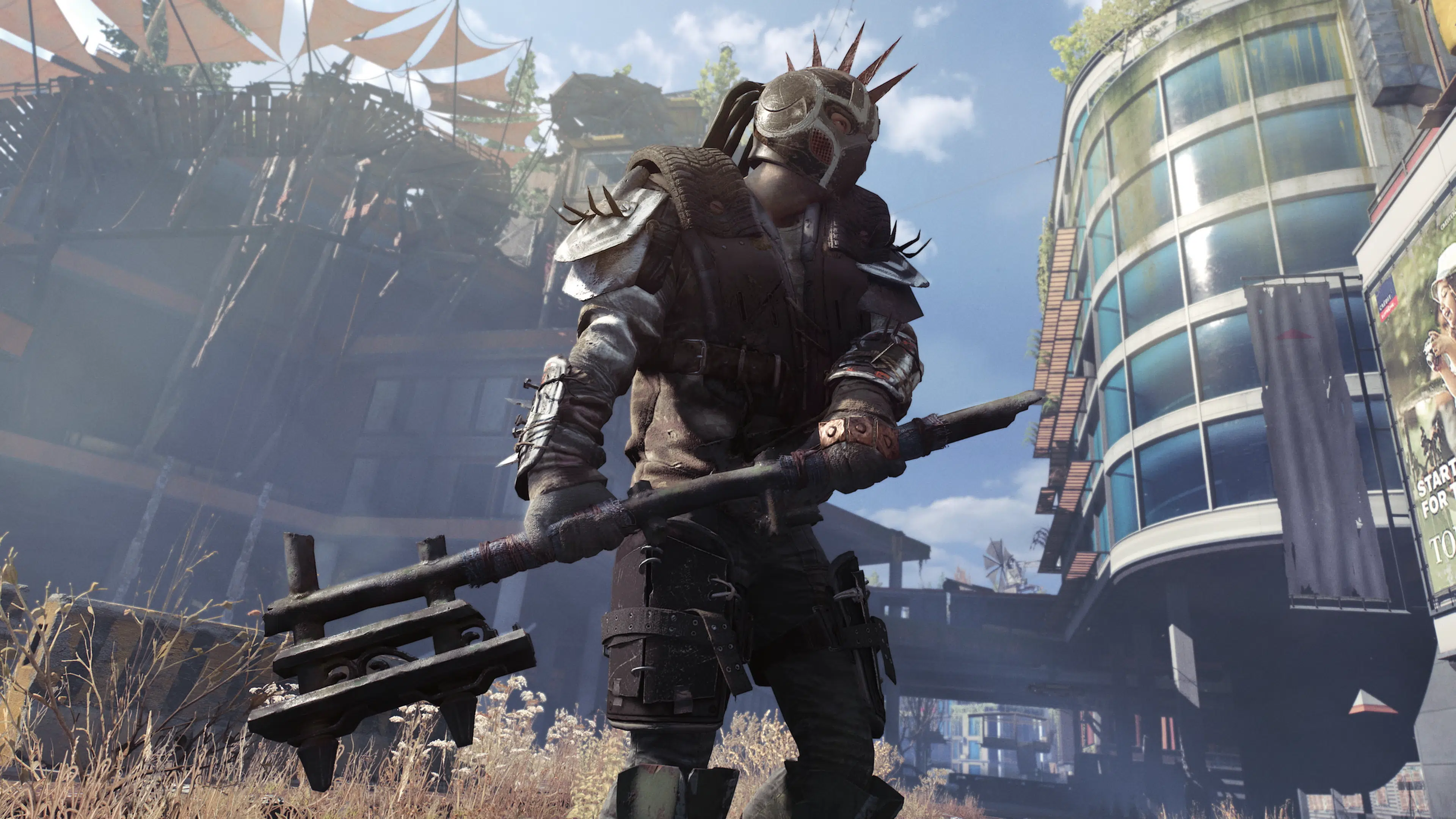With the upcoming release of the sequel to Techland’s much-beloved genre-bending open world game, Dying Light (a game that some, including me, would call one of the best games of the last generation), Techland is poised to turn one great game, and its solid run of DLC into a fully fledged multi-entry franchise. With the recent delay of Dying Light 2 Stay Human into next year still on fans’ minds, a very confident Techland recently invited us to their press event to make proper introductions with the upcoming sequel. With roughly three hours under our belt, here are my thoughts and observations on the current state of Dying Light 2.
Story and World Design
Dying Light 2 Stay Human takes place about 15 years or so after the events of the first game. The world has started to adjust to this new reality and human society has done what it does best: section off into opposing tribes and start fighting for resources. This conflict is where the narrative of DL2 finds its setting.
In the pre-demo presentation we were given, this setting and environment was described as the Modern Dark Ages. The idea, we were told, is that humanity has been uprooted by the apocalyptic plague with such intensity that the world has found itself once again steeped in the brutality, superstition, and tribalism of the European Dark Ages in a dilapidated modern city. Once I got my hands on the game this was the first major difference from the first DL that I noticed. Whereas the city of Harran felt inspired by a combination of Turkey/The Middle East with some allusions to South America and Brazil in particular: this city feels much more like modern Eastern Europe with its ancient cathedrals and cobble streets now existing as suburbs to an urban sprawl replete with skyscrapers, concrete, and steel.
The Modern Dark Ages setting and aesthetic extends to the character designs and apparel, in particular, the first area we tried which was aptly titled Old Villador. This area is generally safer than the rest of the city and less vertical overall. Here you’re introduced to a group of Survivors (which serves as both their literal description and their faction name) living on the grounds of an ancient cathedral that is called the Central Bazaar. A number of these NPCs are sporting what could best be described as a Mad Max version of Catholic Friars’ garb. They live a monastic lifestyle. They tend to their garden. They share resources and labor. They send out runners during the day to look for supplies and have an outstanding feud with a more militarized group called the Peace Keepers.
You are Aiden, a Pilgrim (as you are called by the locals) from outside the walls who finds yourself caught between these two groups looking for your sister who’s gone missing. Central to this resource-driven conflict is both electricity and highly-sought-after-and-difficult-to-harvest crystals left over from when the city was blasted. These are believed to help prevent the spread of the infection when carried on your person. It’s up for debate as to whether or not that’s true with come characters clearly not buying the idea while others will, and as I saw do, kill for them. This conflict over superstitious crystals fits right in with the overall feel that Techland is going for and it fits right alongside the edged weapon focused combat they are known for (more on that later).
I loved the feel and design of the first game’s world and felt that it was unique and interesting. Not many games that aren’t about current military conflicts take place in the Middle East, and it was an especially different setting for a sci-fi horror/apocalypse game. At first blush, I didn’t feel that same intrigue with the more European feel this game’s environment had. That being said, it did feel like a natural progression in a lot of ways and I appreciate that they aren’t just doing the same exact setting twice. This was especially true when we got to the second area of the demo, a downtown urban area called the Central Loop. This was more modern Europe instead of the old world Eastern Europe that Old Villador represents. It was emphasized to us that verticality was a very intentional design choice for DL2, and the Central Loop showed this pretty clearly. I was told that it is also more dangerous overall and requires more active awareness to navigate. The safe areas guarded with ultraviolet lights make a comeback in both areas as well. They have more variety this time in the way that you secure them from Infected. I found one that had a tower climbing puzzle like you would see in a Far Cry game to get to the generator switch for the lights. I was told that these are just one of several new ways to secure safe houses and they do not unlock map items like in Far Cry. It is a small touch but one that I appreciated. So while I did miss Harran, I don’t think I saw enough of the game to give final judgement on the setting and game world just yet, and I think I could end up falling in love again. Just maybe not as quickly.
Music and Sound
Something that I did immediately fall in love with was the music and sound. I found myself wishing that I could just have the audio blasting in a quiet room. The music in particular seems to have pretty wide variance depending on the situation. Walking through a dark building with violin strings stalking you down the hall or running away from the infected with a fast and frantic orchestra running right along side you was really cool and I’m excited to experience more of it. Likewise the sound effects in combat were enough to make me laugh a number of times. The smashes, squishes, splats, tinks, pops, and thuds made the combat that much more fun. In our interview (which will go up at a later date) Game Director Tymon Smektala talked about how excited he was for the sound design and how composer Olivier Deriviere went so far as to create his own instrument to capture the feel they were looking for in some sections. From what I heard it looks like that ingenuity paid off. There was the occasional odd sound placement or volume spike but seeing as how this was a non-final build with some polishing still happening I reserve holding that against it.
World Progression and Characters
Narratively speaking in the time I had with DL2, it leans into conversational RPG elements more than the first game did. When you’re talking to NPCs there is a dialogue wheel like one would expect in a modern Western-developed RPG, and it seemed like my responses to them had an immediate effect on how the character felt about me. There are various missions that involve you helping gain access to a valuable resource, like turning a power plant back online. When these missions are completed you get to decide whether you open the resource up for the Survivors or the Peace Keepers to control. Either one you choose ends up unlocking a new feature on the map, like jump pads (a Survivor perk as theirs focus on navigation) or car alarm traps (a Peace Keepers perk as theirs focus on combat opportunities). While I didn’t get to see a big enough chunk to get a sense of every way that your choices affect the game world and story it was apparent how your choices can immediately affect options in navigation as well as combat abilities and your NPC relationships going forward.
It’s good to see that in what I saw the voice acting is very solid. I got real emotion from the character models’ performances and I had real opinions on them as characters. Rosario Dawson in particular gives a good performance in the demo without severe interference from being motion captured and her voice acting is solid. On occasion her character model entered uncanny valley territory in a way that other NPCs didn’t for me but I think I can attribute that to the fact that we know what she looks like and have seen her act in other media so I had more of a reference for what her face should look like when talking and emoting. Overall I left excited to see how the narrative plays out.
Combat
From a more gameplay-focused perspective, the three features most oft talked about from Dying Light were the melee-focused combat, the parkour, and the day/night cycle. All of these are returning with various tweaks and adjustments. Firstly, combat was very similar to the first game. It’s melee-focused and visceral. We were told that this time they wanted it to feel even more brutal than it did in the last one. To this effect the reaction animations are more violent and the sound effects are more detailed and really stood out. I really got a kick out of bashing and cutting at infected and humans alike. As always we at MP1st save our judgments for the final release but, I can say that the combat encounters I played were very satisfying and it does appear that the people at Techland have not lost their Dead Island pedigree for making this hack and slash combat fun.
The other major difference to combat is a mechanical one. In the same interview Smektala explained that there are 200 or so weapons in the game and the desire is for you to try them all. To this effect while weapon degradation is back, weapon repair is not. Once it breaks, it’s gone. In the demo I played, the weapons reappeared in my inventory when they broke but they did seem to break perhaps a smidge faster than I would have liked. And knowing that in the final game I was going to have to scrounge to find a replacement didn’t seem exciting. That being said, you do have a bunch of weapon slots in your inventory even if you can only have four available on your weapon wheel at one time so I don’t think it will be an issue of not having any weapons as much as it may be an issue of having to just not have a favorite weapon. I did find that all the weapons I had access to felt a little different, and I did enjoy using all of them. I’m curious to see how the flow of moment to moment gameplay gets affected by this change.
Two things I’d be remiss to not mention are that bow and arrows make an appearance and in this demo they didn’t let us see any of the weapon augments like flames or electricity but they are definitely there and I was told that they are really excited about them. The bows were able to kill most of the enemies I encountered in one or two headshots but aiming took enough skill and using them was slow enough that they didn’t feel overpowered. I liked them and I appreciated the variety but in my time playing I tended to prefer just going for it with a police night stick or an ax. Those sound design and blood splattering effects were really compelling I gotta say.
Parkour
Personally, I think the feature that stuck out to me the most in the first game was the Parkour. It made the action, whether you were chasing or running, that much more exciting. It was probably the set of mechanics that most directly affected the moment to moment experience in the first game and I was excited to see how it was being implemented here.
Thankfully there doesn’t seem to have been a massive redesign on the essentials of the movement. I was able to naturally start pulling off basic moves and navigating roof tops and streets crowded with dilapidated cars right when the demo started. That being said, beyond the simple vaults and climbing, they have made changes. As I mentioned before: there is a much bigger emphasis on verticality in DL2. I was able to see that in the Central Loop portion of the map from the demo. The biggest new movement mechanic I saw opened up options to navigate these skyscraper: the Hang Glider. Which was one of a handful examples I saw (dialogue trees being another) of how they are willing to look to other big games in the space for inspiration while also put their unique twist on it like we talked about in our interview with them earlier this year. It functions in much the same way that hang gliders usually do in games. You jump, pop it open, and then use the left stick to steer it. I thought that the rate of descent felt a little fast but there are large fans on top of the buildings that you can glide over to get a burst of height letting you sail from one building to the next. At first I didn’t find the glider as intuitive as I would have liked, and I struggled getting used to it. I did mostly figure it out by the end and I think that with a little more practice I can see the possibilities it could offer.
In the previous game I absolutely loved the grappling hook and I think it would fit right in alongside the hang glider. Unfortunately I didn’t get to see the grappling hook in action but I was assured that it is in the game so we’ll have to wait until the final release to see how that affects the movement. (The drop kick which I specifically asked about before the demo is in the game too and it’s also still dope as all get out.) I did find myself having a little difficulty with some of the timing and distancing on the navigation in general. So while it definitely felt different I was able to do basic parkour right off the bat as I mentioned above so I’m assuming that with more practice I’d have an easier time adjusting to the new systems. Time will tell.
Day/Night Cycle
Now for the game’s namesake, the day/night cycle. In the first game, night time was dangerous and it felt dangerous. I can only think of one other game that made in-game night time feel genuinely scary compared to the day (Capcom’s fantastic action RPG Dragon’s Dogma being the other). With the limited visibility and the nearly unkillable Volatile infected running around, your best option for a large part of that game was running to a safe zone and sleeping until morning. And even in the late game you still needed to be careful. With Dying Light 2 Stay Human, Techland is very obviously going for a slightly different approach.
As the game’ director Smektala told me, a lot of players were too scared of the night so they just avoided it all together and never saw that portion of the game. So in this outing they are trying to make it less scary and more necessary to the overall experience. I saw several of these mechanics at work. During the day, indoor areas are densely populated with hibernating infected whereas at night they become active and the streets become packed as they wander out. This then is a major influence on the missions and objectives: forcing you to take on indoor missions at night unless you’re willing to burn through your resources to kill the hordes and stay alive. I tried running in to do an indoor mission in the daytime and while I made it work I did end up losing two weapons and all but one of my health bandages.
I was also told that the loot and weapons you find at night are higher tier and thereby there is also an incentive to go looting then. While I did loot for parts to build expendable items like bandages, syringes, and molotovs the weapons in the demo were preselected in our inventory and they regenerated when we lost them which is not how the final game will work so I was not able to see this tier grouping in action for myself. I did see the value in having different weapons to switch between however. So I’m not too worried about it.
There was one last night time mechanic that I saw that I thought had real potential. As I was running around at night a rectangle would appear at the top of my screen that said “Chase” with a few bars underneath it. I heard what sounded like a much more aggressive Infected behind me and I started taking damage. The first time it happened I didn’t even bother to turn around. I just booked it and started weaving through the streets and over the roofs using as complex of a path as I could to try and lose whatever was attacking me. As time went by I saw one of the bars start to flash and then fully change to yellow. I then heard more voices chasing me. Eventually I made it away. The next time that happened I wasn’t so lucky, I got caught in a corner and was killed.
It turns out that this Chase mechanic is a new feature that appears to build on the Night Walkers from the first game. When one sees you they start chasing you and the longer the chase lasts the more of them there are. It ends if you get to a safe haven or you die or I assume if you turn around and kill them but no one I spoke to tried that. It felt a little like a zombie version of the star system from Grand Theft Auto. The longer you run, the more “popular” you get. I wasn’t able to tell if your bars go up just based on time lapsed or based on other chasers seeing you run by and joining in. It’s a mechanic that feels like it will make the game very popular for streamers and “let’s play” channels but could also make for both fun and frustration for the average person. I will say that I got a real kick out of both times it happened to me. I think I could see it being something where I both learn strategies for ending it quickly when I need too but also could really let go for a while for the fun of having a reason to push the parkour to the limits. I think it’s one of the features I’m most excited to see more of when the game comes out.
A Word on Multiplayer
I know us being MP1st you would expect us to have something to say about Multiplayer. Well at this event they didn’t show us any multiplayer however Tymon Smektala and I did have a chance to talk about it and is touched upon in our interview with Techland going up the site soon.
Final Thoughts from the Game Preview
At this site we try to withhold judgment until the game is finalized and it’s review time. But I will say that I am personally still very excited for Dying Light 2 Stay Human. I have mentioned a couple of things that I was not totally sold on or that I would have liked to be slightly different. I’ve also pointed out things that I think are really interesting and that I’m wanting to see more of. But even at three hours this was a limited view. It was iterated to me a couple of times that they were still polishing which is why the delay happened to begin with. Ultimately, I’m excited to get back into this world for a full length experience and you can count on us to be here to tell you all about it come February.
We have an in-depth interview with Tymon Smektala and the extended gameplay look. Until February, Good Night and Good Luck.
MP1st would like to thank Techland for inviting us to play and record Dying Light 2, as well as talking to us about the game.
